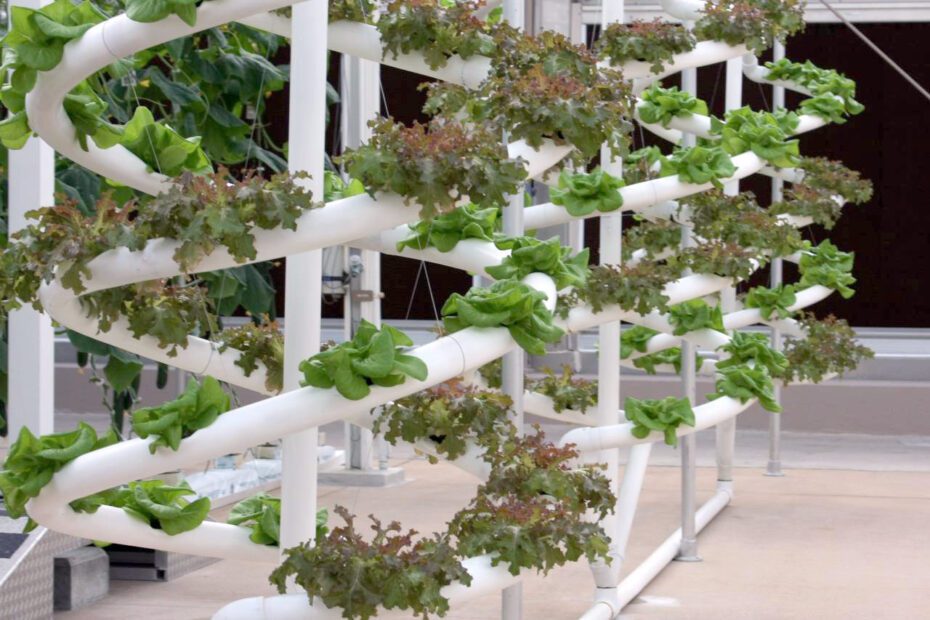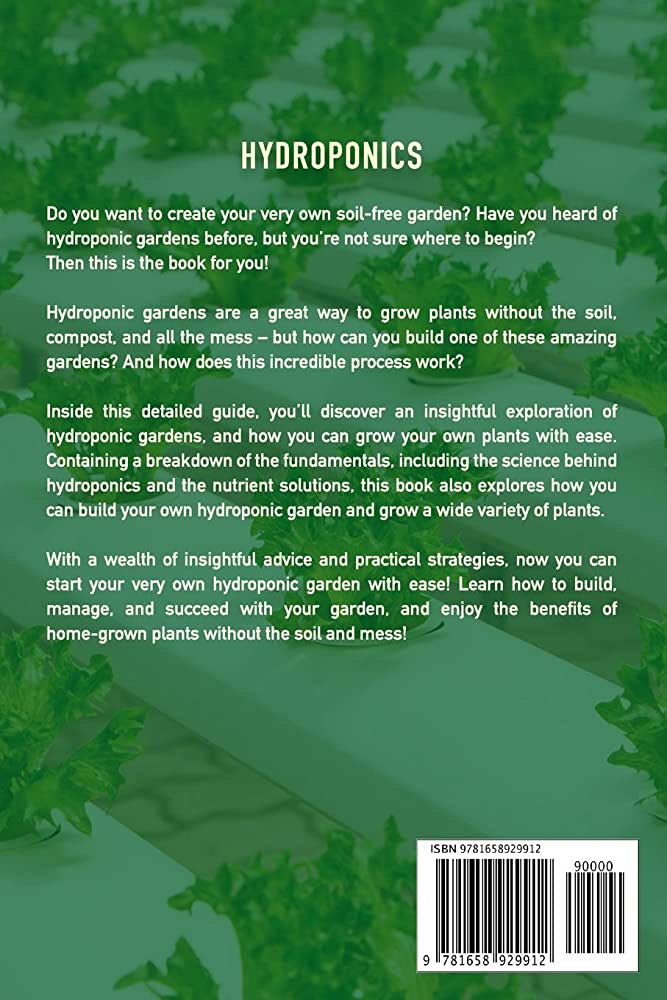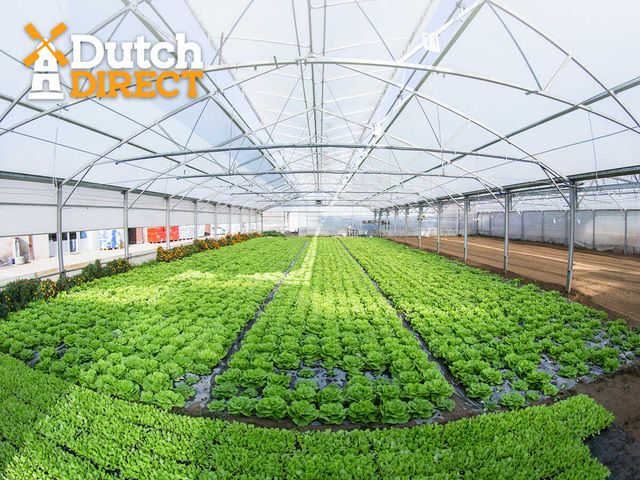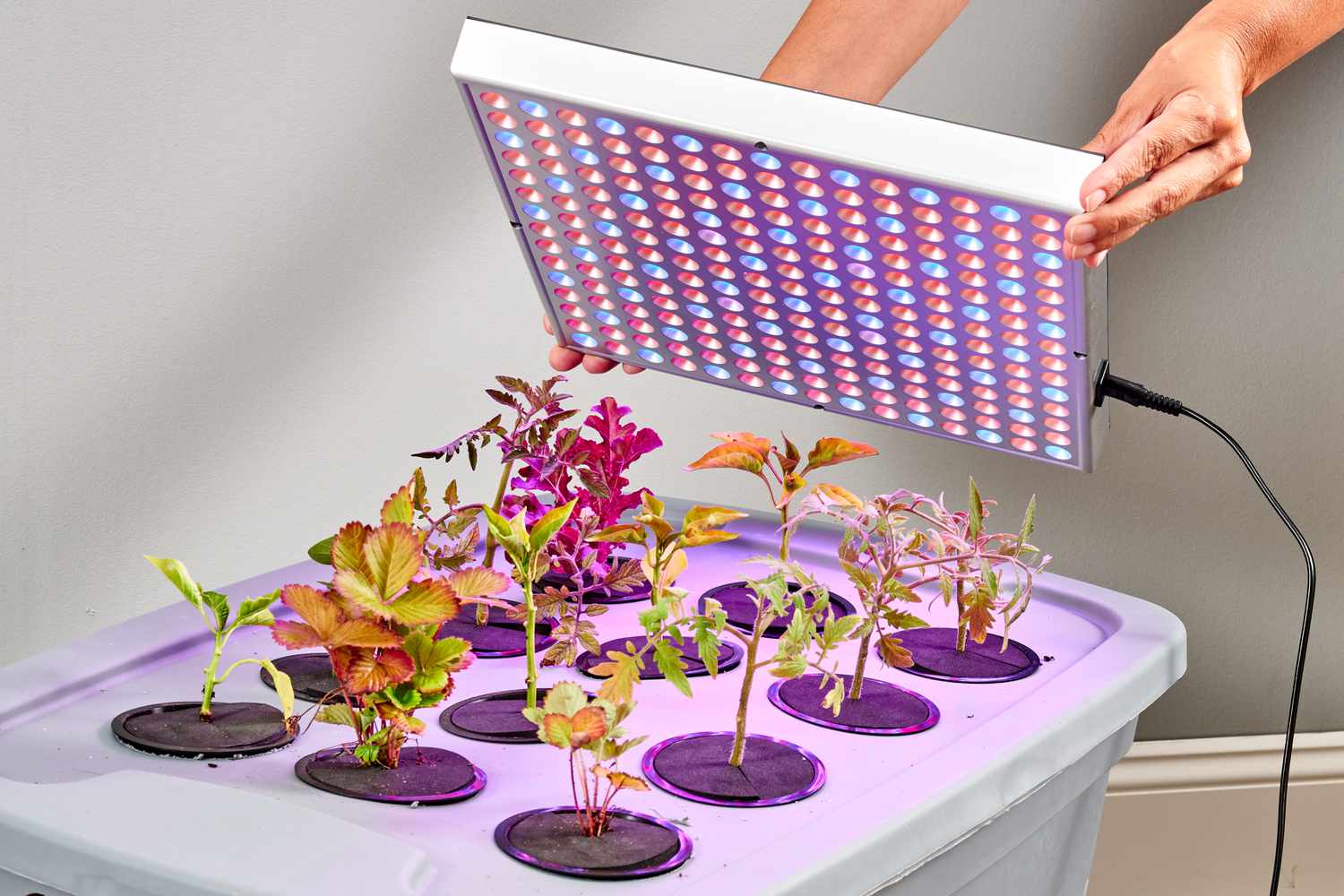Vertical hydroponic gardening is a method of growing plants in a vertical system without soil. It is a sustainable and efficient way to produce fresh vegetables and herbs all year round, no matter the location or climate.
Vertical hydroponic gardening is gaining popularity as a method for growing fresh produce year-round. It involves growing plants in a vertical system without soil, using water and nutrients instead. This method of gardening is becoming increasingly popular due to its ability to increase yields and make use of less space.
Additionally, vertical hydroponic gardening is environmentally friendly as it reduces water usage and soil erosion. This technique is perfect for urban areas, where space is limited, or for areas that have unfavorable weather conditions. In this article, we will explore the benefits, types, and essential components of vertical hydroponic gardening.

Credit: www.freshfruitportal.com
Vertical Hydroponic Gardening: An Overview
Growing your own vegetables is an excellent way to ensure that you consume fresh, organic produce with minimal environmental impact. While traditional outdoor gardening is a popular choice for many, vertical hydroponic gardening is becoming increasingly popular. This method utilizes vertical space to maximize yield and minimize the amount of space required to cultivate crops.
Here’s an overview of what vertical hydroponic gardening is and some of its most significant benefits.
Brief Explanation Of What It Is
Vertical hydroponic gardening is a soilless method of gardening that involves the use of stacked layers of planter boxes or towers. These planter boxes or towers are designed to hold water and nutrients that are delivered directly to the plants’ roots.
Vertical hydroponic gardening can involve the use of artificial lighting, which allows for year-round growing.
Benefits Of Vertical Hydroponic Gardening
- Space-saving: Vertical hydroponic gardening allows for more plants to be grown in a smaller area compared to traditional outdoor gardening, making it suitable for people with limited outdoor space.
- Water conservation: It uses less water than traditional outdoor gardening, as the water is recirculated in a closed system. It results in up to 90% less water usage compared to field-growing crops.
- Pest and disease management: By growing plants indoors, vertical hydroponic gardening can help control pests and disease outbreaks better than traditional outdoor gardening.
- No soil requirement: Vertical hydroponic gardening does not require soil, which means that there is no need for weeding and soil-borne pests are mostly eliminated.
- Higher yields: Vertical hydroponic gardening can yield up to 10 times more produce than traditional outdoor gardening with the same amount of space.
- Year-round growing: Artificial lights in vertical hydroponic gardening can facilitate year-round growing of crops.
- Easier harvesting: Since the plants are stacked vertically, it is easier to harvest, prune, and maintain them.
Vertical hydroponic gardening is an efficient and sustainable method of growing crops. Whether you want to grow vegetables throughout the year, have limited outdoor space, or wish to reduce your environmental impact, vertical hydroponic gardening is an option to consider.
Considerations Before Setting Up Vertical Hydroponic Gardening
Vertical hydroponic gardening is a modern approach to gardening that allows people to grow crops in urban spaces with limited access to fertile land. It involves growing plants without soil, using a nutrient-rich solution and a vertical system. We will look at the considerations to be made before setting up your own vertical hydroponic garden.
Location
Choosing the best location for your vertical hydroponic garden is crucial, as it can affect the growth and health of your plants. Here are some key points to keep in mind:
- The location should receive enough sunlight to promote photosynthesis.
- The area should be well ventilated to allow for air circulation.
- Avoid placing the garden in a location that is prone to extreme temperature changes.
- Keep the garden away from sources of pollutants, such as car exhausts and smokestacks.
- The location should have easy accessibility for maintenance and monitoring.
Size Of The Garden
The size of your vertical hydroponic garden should depend on the amount of space available and the number of plants you intend to grow. Here are some key points to keep in mind:
- Start small and gradually expand as you gain experience in vertical hydroponic gardening.
- The size of the garden should be manageable for maintenance and monitoring.
- Ensure that the space you choose has enough vertical height for your garden system.
- Plan for adequate space between the plants to allow for adequate growth.
Water And Nutrient Supply
Ensuring a consistent supply of water and nutrients is a critical aspect of vertical hydroponic gardening. Here are some key points to keep in mind:
- The nutrient solution should have an appropriate ph level for optimum plant growth.
- Monitor the nutrient levels regularly to ensure they remain at the required level.
- The water and nutrient supply must be consistent and regulated to avoid plant damage.
- Ensure that the system drains properly, preventing root rot and waterlogging.
- Water and nutrient supply levels should be easily adjustable for different plant needs.
Type Of Vertical Hydroponic Systems
There are various types of vertical hydroponic systems, each with unique characteristics. The type you choose will depend on your specific needs and preferences. Here are some key points to keep in mind:
- Choose a system that aligns with your space and plant needs.
- Research different growing systems and their benefits before settling on one.
- The system should be easy to assemble, maintain, and monitor.
- Choose a system that is adaptable to different plant types and growth stages.
- The system should have enough support for the weight of the plants.
Lighting Conditions
Lighting plays a vital role in vertical hydroponic gardening, as plants require light for photosynthesis. Here are some key points to keep in mind:
- Artificial lighting should mimic the natural sunlight spectrum.
- The lighting should be adjustable for different stages of plant growth.
- Use energy-efficient lighting to prevent high energy costs.
- Avoid placing lighting in areas susceptible to water damage.
- The lighting should be well-positioned for optimal plant growth.
Vertical hydroponic gardening is an exciting way of growing plants, and there are many factors to consider before setting up your garden. Location, size of garden, water and nutrient supply, type of vertical hydroponic systems, and lighting conditions are crucial considerations.
Keep these key points in mind, and you’ll be on your way to a successful vertical hydroponic garden.
Different Types Of Vertical Hydroponic Systems
Vertical hydroponic gardening is becoming increasingly popular, and for many good reasons. For instance, this type of gardening increases yields and minimizes water and nutrient waste. Additionally, vertical hydroponic gardening maximizes the use of space, thereby allowing gardeners to grow more crops in smaller spaces.
Apart from these benefits, there are different types of vertical hydroponic systems that one can choose from. In this section, we will discuss the various types of vertical hydroponic systems.
Tower Systems
Tower systems are vertical hydroponic systems that are constructed in the shape of a tower. They are an excellent choice for gardeners who have limited space because they take up very little floor space. Instead, these systems take up vertical space by stacking the plants in a tower.
The tower is designed to allow water to flow through it, ensuring that all plants receive equal water and nutrient distribution.
Some key points to consider about tower systems are:
- They are easy to build and maintain
- They can accommodate a range of plants, including fruits and vegetables
- They are highly productive and space-efficient
- Some tower systems come equipped with built-in led lighting systems, making it possible to grow plants in low-light environments.
A-Frame Systems
A-frame systems are vertical hydroponic systems that are designed to resemble the letter ‘a. ‘ These systems are constructed by placing two panels together at the top to form an ‘a’ shape. Plants are then grown in the panels by watering them from a top-down position.
One advantage of a-frame systems is that they provide a lot of growing space, and they can be used both indoors and outdoors.
Some key points to consider about a-frame systems are:
- They are perfect for small spaces
- They can accommodate a range of plants, including herbs and vegetables
- They are easy to build and maintain
- They provide the perfect environment for growing crops like strawberries and tomatoes.
Wall-Mounted Systems
Wall-mounted systems are vertical hydroponic systems that are mounted on walls. These systems are ideal for gardeners who don’t have a lot of floor space and want to utilize the wall space instead. In these systems, plants are grown in trays that are attached to the wall, and they rely on a drip-irrigation system for watering.
Some key points to consider about wall-mounted systems are:
- They are aesthetically pleasing and can add a touch of greenery to your home
- They can accommodate a range of plants, including flowers and herbs
- They provide the perfect environment for growing microgreens.
Hanging Basket Systems
Hanging basket systems are vertical hydroponic systems that are suspended from the ceiling. These systems are ideal for gardeners who have limited floor space but want to grow plants in a more traditional way. Plants are grown in baskets that are suspended from the ceiling, and they rely on a drip-irrigation system for watering.
Some key points to consider about hanging basket systems are:
- They provide a space-saving solution that is perfect for small apartments
- They can accommodate a range of plants, including flowers and herbs
- They can be easily moved around to adjust the lighting conditions.
Rack Systems
Rack systems are vertical hydroponic systems that are constructed in racks or shelves. These systems are perfect for gardeners who want to grow a lot of plants and want to utilize as much space as possible. In these systems, plants are grown in trays that are stacked on top of each other, and they rely on a drip-irrigation system for watering.
Some key points to consider about rack systems are:
- They are highly productive and space-efficient
- They can accommodate a wide range of plants, including fruits and vegetables
- They are versatile and can be used both indoors and outdoors
- They are easy to assemble and maintain.
There are various types of vertical hydroponic systems, each with its advantages and disadvantages. The choice of system will depend on the gardener’s needs, available space, and the type of plants they want to grow. Regardless of the system chosen, vertical hydroponic gardening is a fun, sustainable, and rewarding way to grow plants.
Setting Up Your Vertical Hydroponic Garden
Vertical hydroponic gardening is an innovative way to grow plants without soil by using nutrient-rich water in a vertical arrangement. This technique allows for optimal space utilization, making it ideal for urban gardeners with limited square footage. Setting up your own vertical hydroponic garden can be both exciting and challenging.
In this section, we’ll outline some essential steps you need to take to ensure a safe and successful garden set up.
Steps To Be Taken To Ensure A Safe And Successful Garden Set Up
When it comes to setting up your vertical hydroponic garden, there are several critical factors to consider, such as preparation of the planting medium, starting your plants, lighting and temperature controls, watering and nutrient supply. Let’s dive deeper into these essential factors.
Preparation Of The Planting Medium
- Choosing a good planting medium is vital to hydroponics. A growing medium should support the plants, and hold the nutrient solution in place while allowing for adequate aeration.
- Some common planting mediums used in hydroponics are coco coir, rockwool, perlite, and vermiculite.
- After choosing the right medium, make sure to saturate it with water and adjust ph level before planting.
Starting Your Plants: Seeds Vs. Seedlings
- Both seeds and seedlings can be used to grow plants, but starting with seedlings is often easier for beginners.
- Seedlings have established roots and can be transplanted into the hydroponic garden easily.
- Seeds require germination before planting, which is slightly more time-consuming than starting with seedlings.
Lighting And Temperature Controls
- Lighting and temperature controls play a crucial role in setting up your hydroponic garden.
- Vegetables and fruits require different light intensities and durations, so it’s important to choose the right type of light and set up a suitable lighting schedule.
- To keep your plants healthy, maintain the temperature of the grow room between 65-80°f (18-27°c).
Watering And Nutrient Supply
- A reliable water and nutrient supply system is necessary for a successful vertical garden.
- Automatic systems can be set up with a water pump and timer to help maintain a consistent supply of water and nutrients to the plants.
- It’s also essential to check the ph of your nutrient solution regularly to ensure optimal plant growth.
Setting up a vertical hydroponic garden requires careful planning and execution. By following these essential steps, you can start growing healthy plants using this innovative, space-saving technique.
Vertical Hydroponic Garden Maintenance
Vertical hydroponic gardening is an excellent way to produce fresh, healthy vegetables in a limited space. It is beneficial for urban gardeners who want to save space by growing plants hydroponically. Though there are various benefits of vertical hydroponic gardening, it also requires some maintenance and care.
Let’s check out how we can maintain vertical hydroponic gardens.
Taking Care Of Your Plants – Pruning And Harvesting
Vertical hydroponic gardening provides a viable way of growing plants by suspending them vertically. Since plants grow in tight spaces in vertical gardens, they must be pruned regularly to prevent overcrowding. Below are some essential tasks for taking care of your plants:
- Prune your plants regularly since they grow closely together in vertical gardens, and this helps prevent overcrowding. Also, prune any diseased or damaged foliage to avoid the spread of infections.
- Harvest your plants frequently to improve the growth rate of new plants in the system.
Monitoring Water And Nutrient Levels And Ph Balance
Maintaining the correct balance of nutrients, water, and ph levels is vital for the success of plants in hydroponic systems.
- Monitor the ph levels of the nutrient solution regularly. It should be slightly acidic, between ph 5.5 and 6.5.
- Keep an eye on nutrient levels in the water since plants rely solely on this solution to grow. Always maintain appropriate nutrient levels, and also keep in mind the plant’s stage of growth.
Pest And Disease Control Methods For Vertical Hydroponic Gardening
Preventing pests and diseases are essential in keeping plants healthy and productive in vertical hydroponic systems. Here are some effective methods for controlling pests and diseases:
- Start with healthy plants by using disease-free seeds or starter plants.
- Clean and sanitize the system regularly and check each plant for any signs of pest or disease development.
- Apply appropriate treatments at the first sign of pests or diseases to prevent widespread infestations.
Cleaning And Maintenance Of The System
Maintaining a clean and well-functioning vertical hydroponic garden is crucial for success. Here are some cleaning and maintenance tips:
- Wash and sterilize all tools, starter materials, and equipment before using them to start a new garden.
- Regularly clean the system to remove excess plant debris and algae, which can grow and clog the system’s irrigation channels.
- Check the system’s pumps and filters regularly for clogging or damage, and replace any damaged parts as soon as possible.
Vertical hydroponic garden maintenance requires minimal effort once you establish a routine. Regular care and maintenance of the hydroponic system and its plants can result in an abundant and healthy harvest.
Frequently Asked Questions On Vertical Hydroponic Gardening
What Is Vertical Hydroponic Gardening?
Vertical hydroponic gardening is a method of growing plants in vertically stacked layers using a water-based solution without soil.
What Are The Benefits Of Vertical Hydroponic Gardening?
Vertical hydroponic gardening saves space, uses less water, yields a higher crop density, and reduces the risk of pests and diseases.
What Plants Can Be Grown In A Vertical Hydroponic System?
Almost any plant can be grown in a vertical hydroponic system, but leafy greens, herbs, strawberries, and peppers are the most commonly grown.
What Equipment Is Needed For A Vertical Hydroponic Garden?
A vertical hydroponic garden requires a growing container, pumps, tubing, grow lights, a water reservoir, and a nutrient solution.
How Much Maintenance Does A Vertical Hydroponic Garden Require?
Vertical hydroponic gardens require minimal maintenance, including regular monitoring of the water ph and nutrient levels, and occasional cleaning.
What Are The Best Growing Conditions For A Vertical Hydroponic Garden?
Vertical hydroponic gardens thrive in temperatures between 65-75°f and 50-70% humidity, with ph levels between 5. 5 and 6. 5 for optimal nutrient absorption.
Conclusion
Vertical hydroponic gardening offers an innovative and efficient way of growing crops without soil. It is perfect for urban gardeners who have limited space or access to land. With this technique, you can grow a significant amount of fresh produce in any climatic condition, including indoors.
Vertical hydroponic gardening also significantly reduces water usage and eliminates the need for harmful pesticides, making it a sustainable and environmentally friendly option. It is a low-cost solution that can generate high yields, making it an efficient method for both small-scale and commercial farming.
Vertical hydroponic systems have revolutionized the concept of traditional gardening, offering a fantastic opportunity for anyone to grow vegetables, herbs, and fruits. The versatility, convenience, and sustainability of this method make it a viable and exciting alternative to conventional farming practices, creating endless possibilities for production, experimentation, and exploration.




